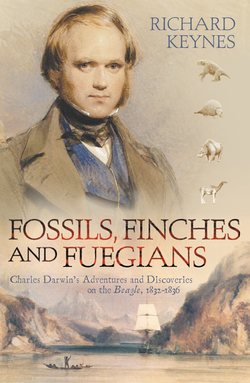Читать книгу Fossils, Finches and Fuegians: Charles Darwin’s Adventures and Discoveries on the Beagle - Richard Keynes - Страница 16
ОглавлениеCHAPTER 8
Digging up Fossils in the Cliffs at Bahia Blanca
The Beagle was now ready to proceed on her first cruise to the south, surveying the coastal waters between Buenos Aires and Bahia Blanca. At first the steep waves in the shallow water at the mouth of the Rio Plata caused so much spray to break over the ship that Charles had seldom felt a more disagreeable sensation in his stomach. In more open water after rounding Point Piedras, matters improved, and on 24 August in ten fathoms of water slightly north of Cape Corrientes in latitude 37o26´S, Charles found ‘incredible numbers’ of the very simple animal that he had encountered earlier in the voyage, north of St Jago (see p.54) and off the Abrolhos Islands, and had been unable to identify. This time he was able to describe in some detail the anatomy of these arrow worms or chaetognaths as they came to be called, and twelve years later published a short paper about them.68
Two days later, in latitude 38o20´S, Charles found some of what he called corallines, the insignificant but exceedingly numerous little organisms of doubtful nature that encrusted rocks and fronds of seaweed like a moss growing on the surface, to which he had been introduced by Robert Grant at Edinburgh (see p.6). On examination of the specimens under his microscope, he immediately and correctly identified them as closely related to what would today be called ‘bryozoans’ of genus Flustra
